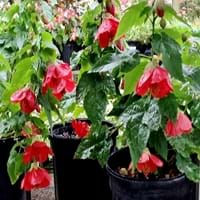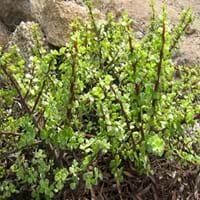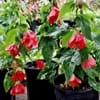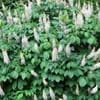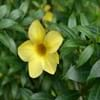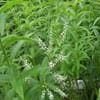Life Span
Annual
Perennial
Type
Tender Perennial
Succulent
Origin
Hybrid origin
Southern Africa
Types
Not available
Limpopo, Prostrata, Aurea, Medio Picta
Habitat
subtropical regions
Dry areas, Lower slopes, Rocky areas
USDA Hardiness Zone
8-10
10-12
Sunset Zone
H1, H2, 8, 9, 12, 13, 14, 15, 16, 17, 18, 19, 20, 21, 22, 23, 24
8, 9, 12, 13, 14, 15, 16, 17, 18, 19, 20, 21, 22, 23, 24
Habit
Oval or Rounded
Twisted/Contorted
Flower Color
Pink, Peach
Pink
Flower Color Modifier
Not Available
Not Available
Fruit Color
Not Available
Green, Red
Leaf Color in Spring
Green, Gray Green, Dark Green, Ivory
Green
Leaf Color in Summer
Green, Gray Green, Dark Green, Ivory
Green
Leaf Color in Fall
Green, Gray Green, Dark Green, Ivory
Green
Leaf Color in Winter
Green, Gray Green, Dark Green, Ivory
Green
Leaf Shape
Maple shaped
Succulent
Plant Season
Spring, Summer, Fall, Winter
Spring, Summer, Fall, Winter
Sunlight
Full Sun, Partial Sun
Full Sun, Partial Sun, Partial shade
Type of Soil
Loam, Sand
Loam, Sand
The pH of Soil
Acidic, Neutral, Alkaline
Acidic, Neutral, Alkaline
Soil Drainage
Well drained
Well drained
Bloom Time
Indeterminate
Late Spring
Tolerances
Not Available
Drought, Dry soil, Heat Tolerance
Where to Plant?
Ground, Pot
Container, Ground, Pot
How to Plant?
Cuttings, Seedlings
Seedlings, Stem Planting
Plant Maintenance
Medium
Low
Watering Requirements
Do Not over Water, Keep ground moist, Keep the Soil well drained, Requires regular watering
Average Water Needs, Needs less watering
In Summer
Lots of watering
Ample Water
In Spring
Moderate
Less Watering
In Winter
Average Water
Less Watering
Soil pH
Acidic, Neutral, Alkaline
Acidic, Neutral, Alkaline
Soil Type
Loam, Sand
Loam, Sand
Soil Drainage Capacity
Well drained
Well drained
Sun Exposure
Full Sun, Partial Sun
Full Sun, Partial Sun, Partial shade
Pruning
Prune to stimulate growth, Remove damaged leaves, Remove dead branches, Remove dead leaves
Prune if you want to improve plant shape, Remove damaged leaves, Remove dead branches, Remove dead leaves, Remove dead or diseased plant parts
Fertilizers
20-20-20 amount
All-Purpose Liquid Fertilizer, Fertilize in early spring, Fertilize late winter
Pests and Diseases
Abutilon mosaic virus, Aphids, Beetles, Scale
Pests and diseases free
Plant Tolerance
Not Applicable
Drought, Dry soil, Heat Tolerance
Flower Petal Number
Single
Single
Foliage Texture
Medium
Bold
Foliage Sheen
Matte
Matte
Attracts
Butterflies, Flying insects, Hummingbirds
Butterflies
Allergy
Not Available
no allergic reactions
Aesthetic Uses
Beautification, Bonsai, Cut Flowers, Decorating walls, Hanging Basket, small hedge, Used as an interior landscaping species
Beautification, Bonsai, Showy Purposes
Beauty Benefits
Not Available
Good for skin, Improve skin condition, Skin cleanser, Skin inflammation, Skin irritation, Skin Problems
Environmental Uses
Air purification
Air purification, Erosion control, Food for birds, Indoor Air Purification, Prevent Soil Erosion, Shelter for wildlife, Wildlife
Medicinal Uses
Not Available
Dehydration, Diabetes, Skin Disorders, Skin irritation, Sore throat
Part of Plant Used
Not Available
Leaves, Stem
Other Uses
Cut Flowers, Decoration Purposes, Grown in botanical gardens as a specimen, Used as Ornamental plant, Used for Landscaping
Animal Feed, Showy Purposes, Used As Food, Used as Ornamental plant, Used for its medicinal properties, Used in salads
Used As Indoor Plant
No
Yes
Used As Outdoor Plant
Yes
Yes
Garden Design
Bedding Plant, Container, Feature Plant, Foundation, Hedges, Mixed Border, Topiary / Bonsai / Espalier, Tropical
Container, Rock Garden, Wall, Tropical
Botanical Name
ABUTILON 'Savitzii'
PORTULACARIA afra
Common Name
Flowering Maple, Parlour Maple
Porkbush, Dwarf jade plant, Spekboom
In Hindi
flowering maple
Elephant Bush
In German
Schönmalve
Elephant Bush
In French
érable floraison
Elephant Bush
In Spanish
arce de floración
elefante Bush
In Greek
ανθοφορία σφενδάμου
ελέφαντας Μπους
In Portuguese
de bordo florescimento
elefante de Bush
In Polish
klon kwitnienia
Elephant Bush
In Latin
Abutilon
bush elephant
Phylum
Magnoliophyta
Embryophyta
Class
Magnoliopsida
Magnoliopsida
Order
Malvales
Caryophyllales
Family
Malvaceae
Portulacaceae
Genus
Abutilon
Portulacaria
Clade
Angiosperms, Rosids
Angiosperms, Core eudicots, Eudicots
Tribe
Malveae
Not Available
Subfamily
Malvoideae
Portulacarioideae
Number of Species
Not Available
Season and Care of Flowering Maple and Elephant Bush
Season and care of Flowering Maple and Elephant Bush is important to know. While considering everything about Flowering Maple and Elephant Bush Care, growing season is an essential factor. Flowering Maple season is Spring, Summer, Fall and Winter and Elephant Bush season is Spring, Summer, Fall and Winter. The type of soil for Flowering Maple is Loam, Sand and for Elephant Bush is Loam, Sand while the PH of soil for Flowering Maple is Acidic, Neutral, Alkaline and for Elephant Bush is Acidic, Neutral, Alkaline.
Flowering Maple and Elephant Bush Physical Information
Flowering Maple and Elephant Bush physical information is very important for comparison. Flowering Maple height is 90.00 cm and width 60.00 cm whereas Elephant Bush height is 250.00 cm and width 121.00 cm. The color specification of Flowering Maple and Elephant Bush are as follows:
Flowering Maple flower color: Pink and Peach
Flowering Maple leaf color: Green, Gray Green, Dark Green and Ivory
Elephant Bush flower color: Pink
- Elephant Bush leaf color: Green
Care of Flowering Maple and Elephant Bush
Care of Flowering Maple and Elephant Bush include pruning, fertilizers, watering etc. Flowering Maple pruning is done Prune to stimulate growth, Remove damaged leaves, Remove dead branches and Remove dead leaves and Elephant Bush pruning is done Prune if you want to improve plant shape, Remove damaged leaves, Remove dead branches, Remove dead leaves and Remove dead or diseased plant parts. In summer Flowering Maple needs Lots of watering and in winter, it needs Average Water. Whereas, in summer Elephant Bush needs Ample Water and in winter, it needs Less Watering.
